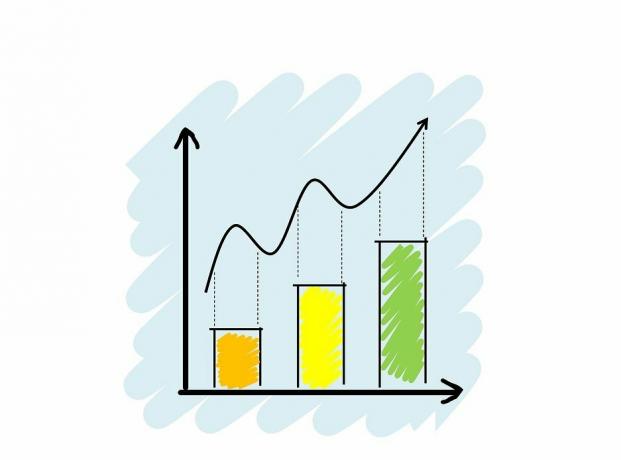The stratified sampling It is a probabilistic technique that is used when the researcher, through certain information, divides a population into subgroups or strata, and then carry out an internal selection of the different strata in a proportional.
This process basically consists of classification of various categories of interest of a certain population, mostly with sociodemographic characteristics such as age, size of habitat, sex, social class or geographic region, in the same way it can be about any other interest that the researcher has.
Advertisements
These characteristics lead to the construction of population strata, which give safe results so that they are reflected in the final samples. These strata must meet a series of conditions that guarantee an internal homogeneity of the population related to the segmentation variables and in turn the strata are heterogeneous between Yes.
In general, these variables make it possible to easily divide the sample into various groups that are mutually exclusive and frequent, which allows differentiating the internal behavior of a certain population.
Advertisements
In this article you will find:
Types of stratified sampling
Depending on the size in which the strata are assigned, it will be possible to classify stratified sampling as follows:
Stratified sampling provided
When a selection is made of a characteristic of various individuals to be able to define the strata, it may happen that the size of subpopulations turns out to be different in other parts of the world.
Advertisements
Uniform stratified sampling
In this case we speak of a uniform fixation, by assigning the same sample size in all the defined strata, without taking into account the weight that these strata have in the population.
This is a technique that can come to favorgo to the lower weight strata that are in a population, since importance will be given to the most relevant strata.
Advertisements
In general, decreases sample efficiencyHowever, it allows the counterpart to carry out a study of the most particular characteristics of each of the strata that has more precision.
Optimal stratified sampling
In this type of sampling, the sample will not keep the proportionality with the population of the size of the strata, rather will define the size of the strata in a proportionate way according to the deviation of the variables of the object in study.
Advertisements
This means that the strata with the largest size of the strata that are more internally variable are chosen and in this way to be able to represent with excellence the totality of the sample of the groups of the diverse populations that present greater difficulty to be able to study them.
What is proportional and disproportionate stratified sampling?
The objective of a study may require an investigator to carry out a detailed analysis of the the strata of a sample, for this there are two main stratified sampling subtypes that They are:
Proportional stratified sampling
In this case the number of elements that are assigned in the different strata, is proportional to the representation of the objective of the population strata, which means that the size of the sample drawn from each stratum is proportional to the size referring to the stratum of the population.
The sampling fraction must be applied in each of the strata, so that all the elements of the population have the same opportunity to be selected and the result of the sample is self-weighted. This procedure is applied when the purpose of the investigation is to reach the parameters of various populations.
Sometimes, the researcher not only needs to consider the population parameters, it may be the case that he also wants to carry out an analysis to detail of a small stratum and compare them with each other, however, it could happen that in some of the strata the results are not given in this type of analysis.
Disproportionate stratified sampling
It consists of a procedure where the number of elements included in the sample for each stratum is not proportional to the representation in the entire population.
This is because not all elements of the population have the opportunity to be included in the sample, that is, the same fraction does not apply to each stratum. On the other hand, the sampling fractions may be different in the strata, therefore, it is a procedure that does not have an equiprobable selection.
In order to estimate the population parameters, their composition must be used as compensation for the disproportion in the sample. However, this type of sampling could be more appropriate than proportional.
The disproportionate sampling can be divided into three subtypes depending on mapping purposes, which would be easier for strata analysis or focus on optimization of accuracy, costs, or both of them.
Advantages and disadvantages of stratified sampling
In the stratified sampling various advantages and disadvantages can be found associated with almost all probability sampling procedures when compared with non-sampling procedures probabilistic. Next, we will mention some of them:
Advantages of stratified sampling
- Provides greater organization in field work.
- The subsets of the population are fully represented in the sample.
- You have the ability to use different sample frames in each stratum.
Disadvantages of stratified sampling
- Your design could be a bit complex by introducing more than three variables to perform the stratification.
- You need to have a sample frame available where you can detail the various characteristics of the subjects that are related to the variables used in the stratification.
- It incorporates confusing statistical calculations.
Stratified sampling example
If you want to study the percentage of a population that smokes and you choose age as a criterion, since it can effectively differentiate the important strata of smoking, then three can be defined strata:
- Under 20 years.
- Between 20 and 44 years old.
- Over 44 years old.
Surely, when dividing into the three strata, the results of the groups have an unequal size, therefore, officially the following results could be obtained:
Stratum 1
Population under 20 years: 42.4 million (41.0%)
Stratum 2
Population between 20 and 44 years old: 37.6 million (36.3%)
Stratum 3
Population over 44 years: 23.5 million (22.7%)
If in this example we want to make a sample of a thousand people, the strata should have a size like the one shown below:
| Stratum | Population | Proportion | Show |
| 1 | 42.4M | 41,0% | 410 |
| 2 | 37.6M | 36,3% | 363 |
| 3 | 23.5M | 22,7% | 227 |


